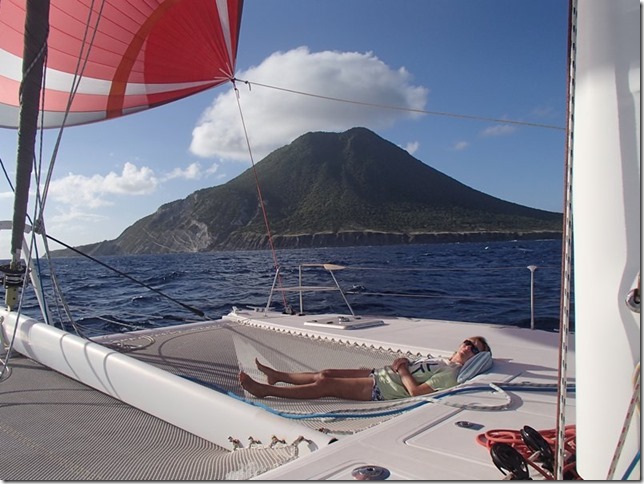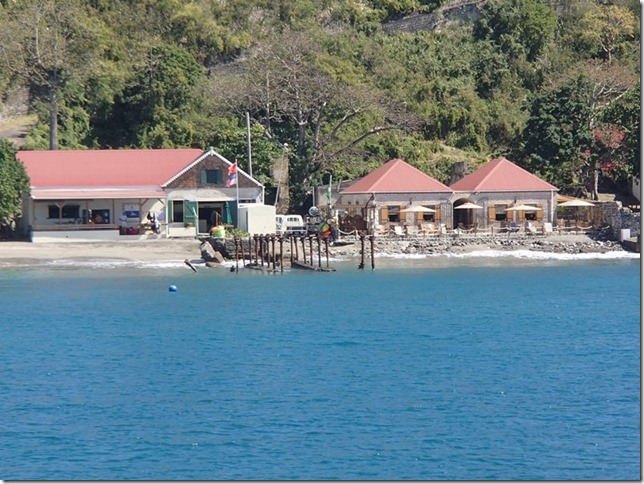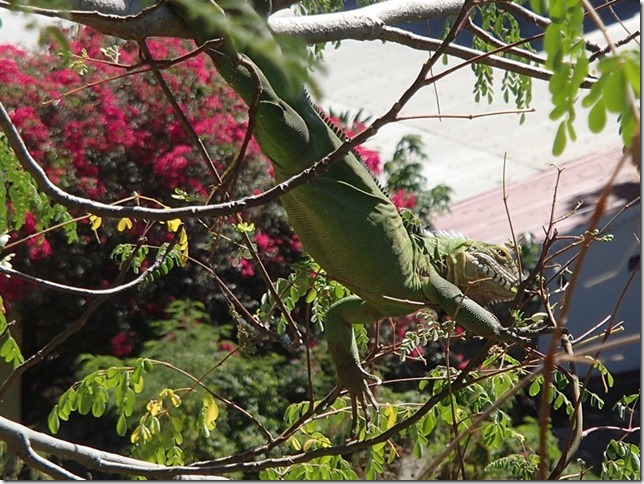St Eustatius (Statia)

Anastasia
Phil May and Andrea Twigg
Sat 31 Jan 2015 16:03
|
17:28.9N 62:59.4W
It is not often that we get a long enough downwind passage to be called
“bean bag sailing” but the 60 mile trip from Barbuda to Statia came close.
Andrea got some relaxation time on the trampoline, if not quite on the bean
bag.
 St Eustatius is one of those “head in the clouds” islands, dominated by
Quill the volcano
Statia is one of the lesser-known of the Caribbean islands, but it is also
one of the most historic and, although the anchorage can be swelly, it is still
well worth a visit.
In the late 1700s, while The British, French and Americans were at each
others throats, the Dutch operated the port as a free trading area and there
were often hundreds of merchant ships anchored here to trade. Many
countries occupying the West Indies were at war with each other, but their
merchants still needed to trade and only way this could be done was through free
ports like Statia which was (at the time) neutral Dutch territory.
To get an idea of the economics of the time, taxation by the British
government meant that plantation owners would realize about £10 a ton for sugar
shipped back to UK, but if sold (illegally) in Statia then the going rate was up
to £500 a ton. The Americans could (also illegally) trade their tobacco
and indigo here for arms and munitions. The Dutch built hundreds of
warehouses (600 at its peak) on the waterfront in Statia to store the goods in
transit. A huge operation.
St Eustatius’ downfall resulted from the Dutch support of the American
Revolutionary army. Although the Dutch and British had been allies for
nearly a century there was a lot of money to be made selling munitions to the
Americans. It is estimated that half of the military supplies of the
revolutionary army came through St Eustatius (sold by the French, Dutch, Spanish
and Danish). This support for the rebels by the “nest of vipers” on St
Eustatius triggered the declaration of war between Britain and Holland in
1780. Once war was declared Admiral Rodney wasted no time in moving his
fleet north to St Eustatius, which he took in 1781. The inhabitants of
Statia did not even know that they were at war with the British until Rodney
arrived.
Rodney confiscated all the goods in the warehouses and the 130 merchant
ships in the harbour. He then proceeded to fly the Dutch flag for another
month, confiscating all additional wares that sailed in to port. He then
held a free auction with an amnesty for any foreign vessels attending. It
is estimated that Rodney raised £3,000,000 from the auction and seized
£4,000,000 in bullion on the island which, to put it in context, was the largest
amount ever taken in war in the 18th century, comparable to the domestic product
for entire the UK at that time.
With failing health, an impending hurricane season and a kings ransom to
protect, Rodney sailed with half the British fleet back to the UK. He sent
the other half to the aid of Cornwallis in the Chesapeake. Meanwhile
George Washington had arranged with the French that their entire fleet would
sail to America to assist with the war. The French fleet, under Admiral de
Grasse, took a slow route to Virginia to avoid detection. This allowed the
British fleet to arrive first, but finding no French there they decided to sail
up to New York. The result was that the British troops in the Chesapeake
were besieged by the unchallenged French fleet. Cornwallis surrendered
shortly afterwards and the war was lost.
When slavery was abolished the trading associated with the plantations
dwindled away and Statia was no longer economically viable, dropping to 300
inhabitants at one point. Today it has tourism (excellent diving) and an
oil storage depot and there are about 3000 people living on the island.
 The old warehouses are being restored into prime waterfront
properties
 You can still find (and keep) original blue beads, the trading currency of
the slaves (although these are modern reproductions)
 We were lucky to see a Lesser Antillean iguana, one of only about 500 left
on the island
|